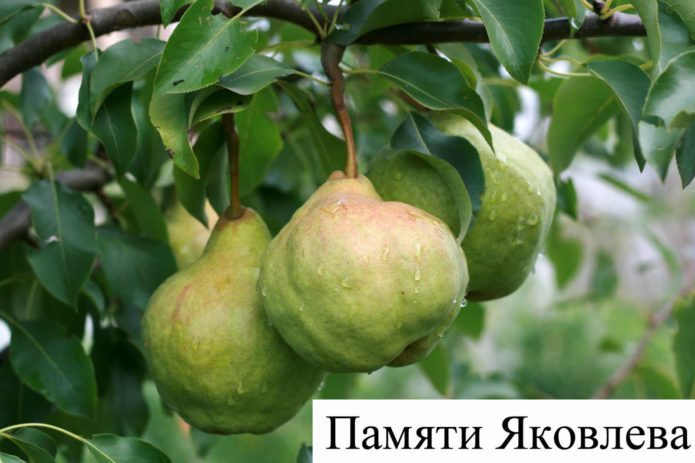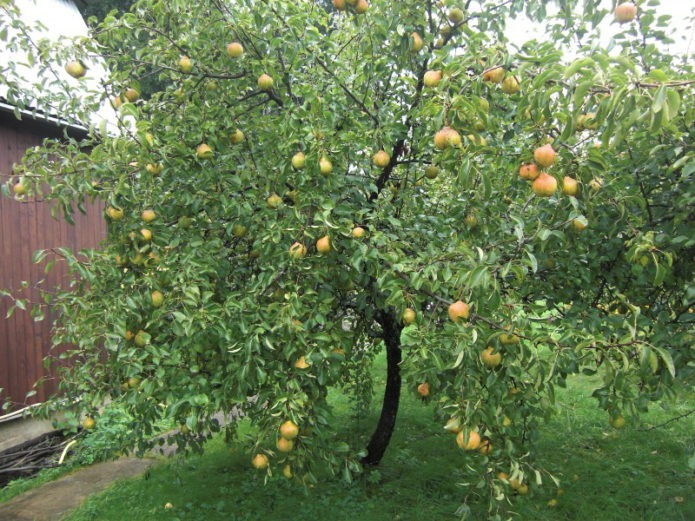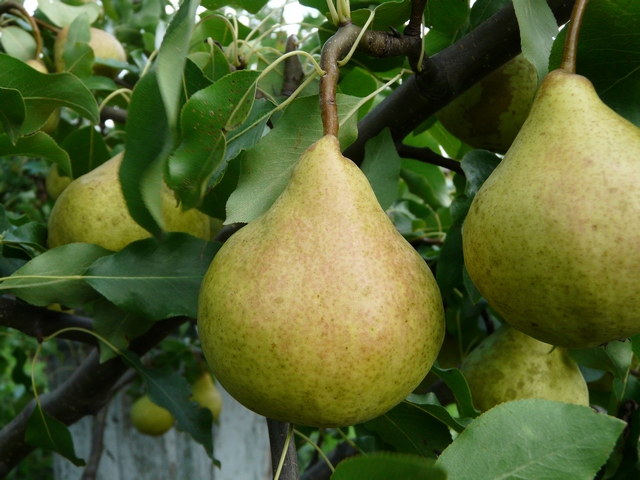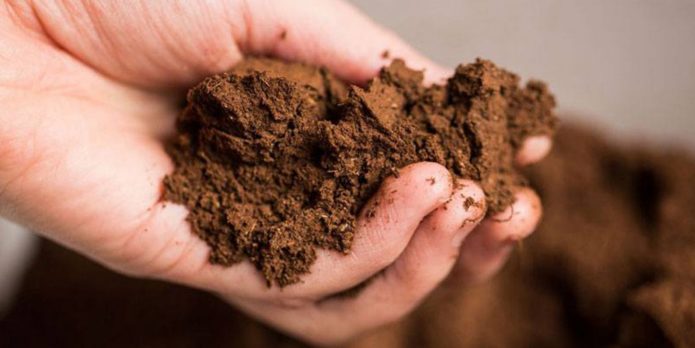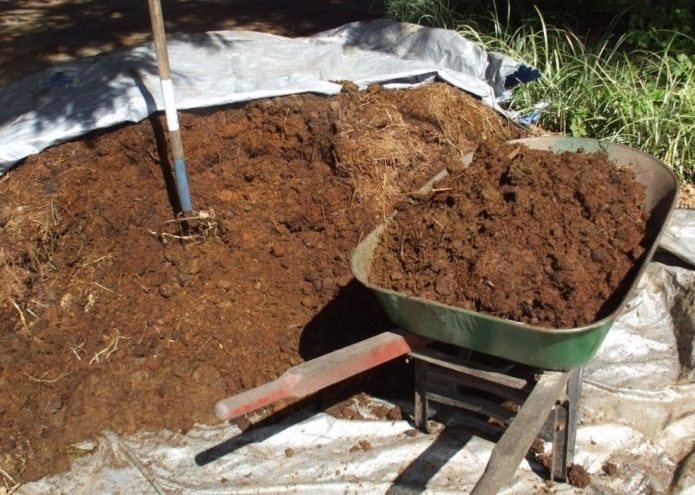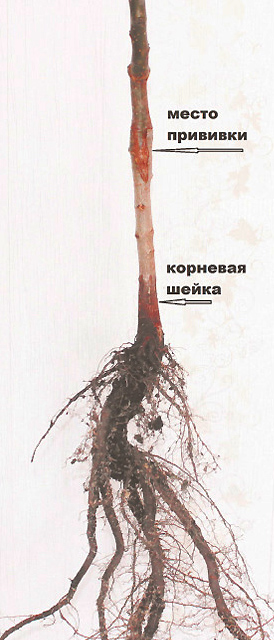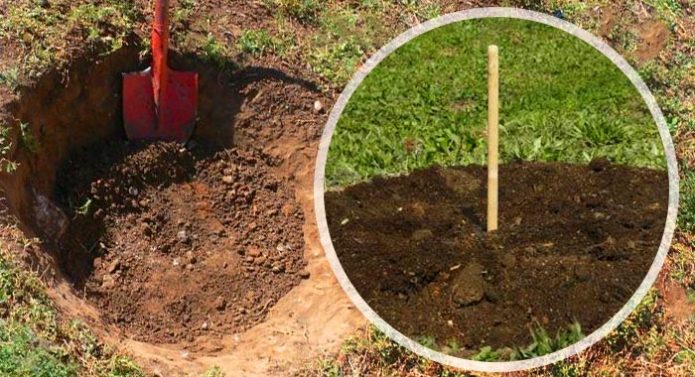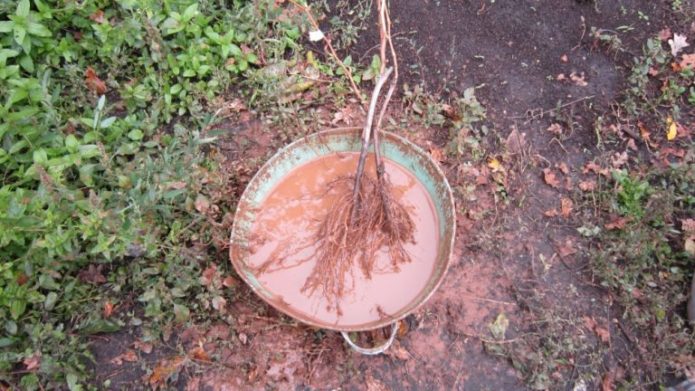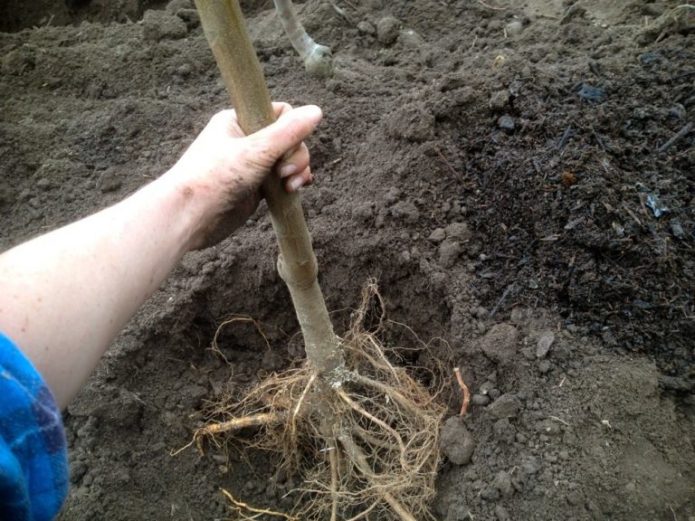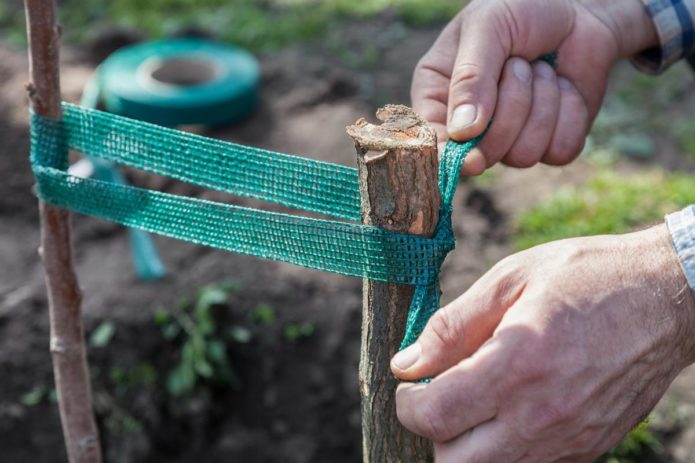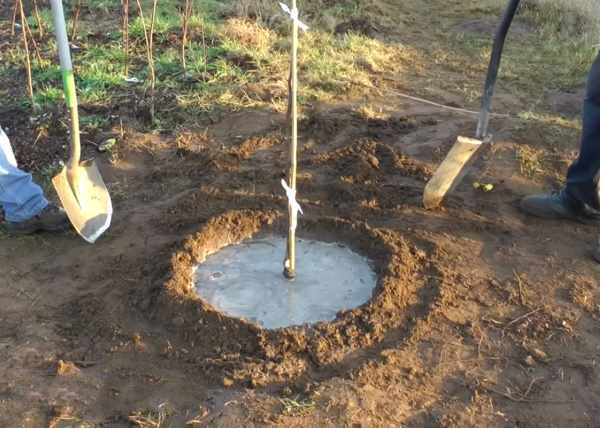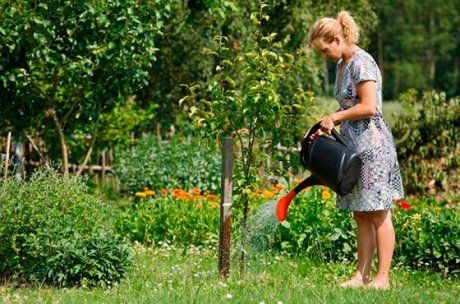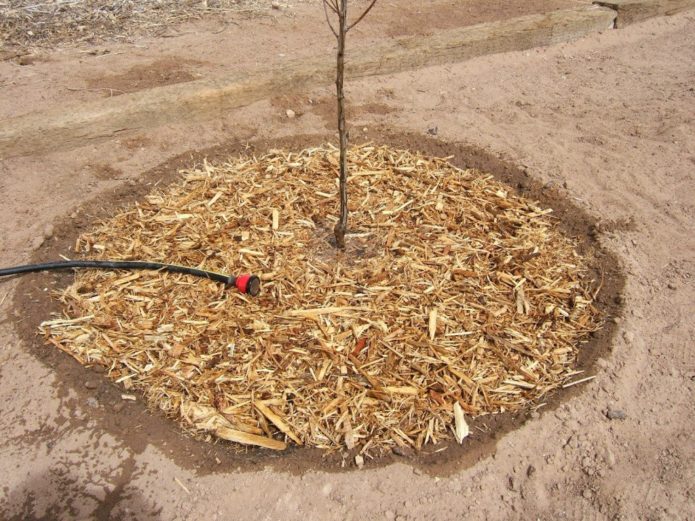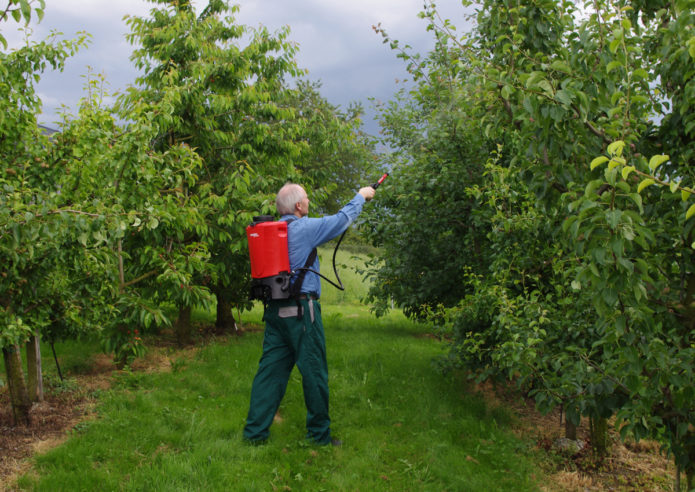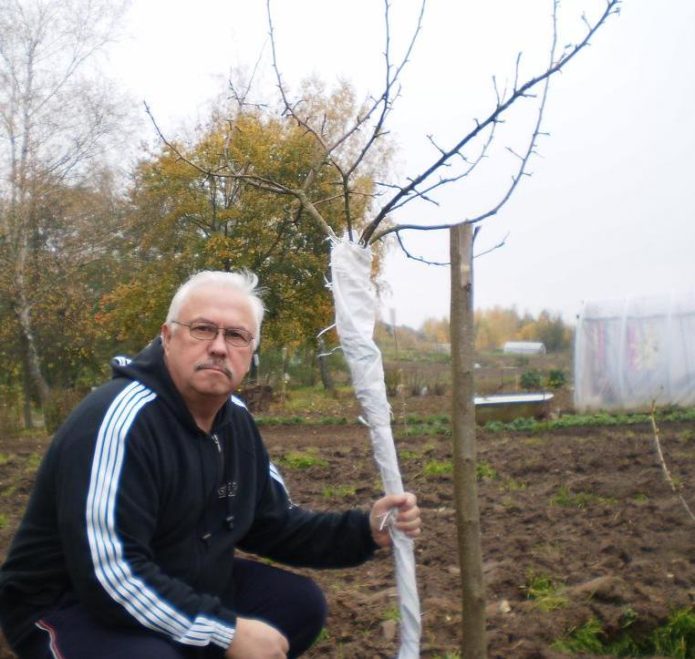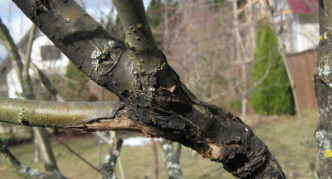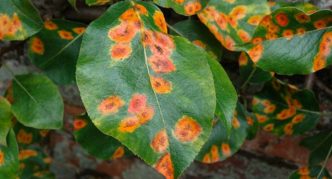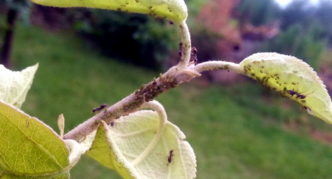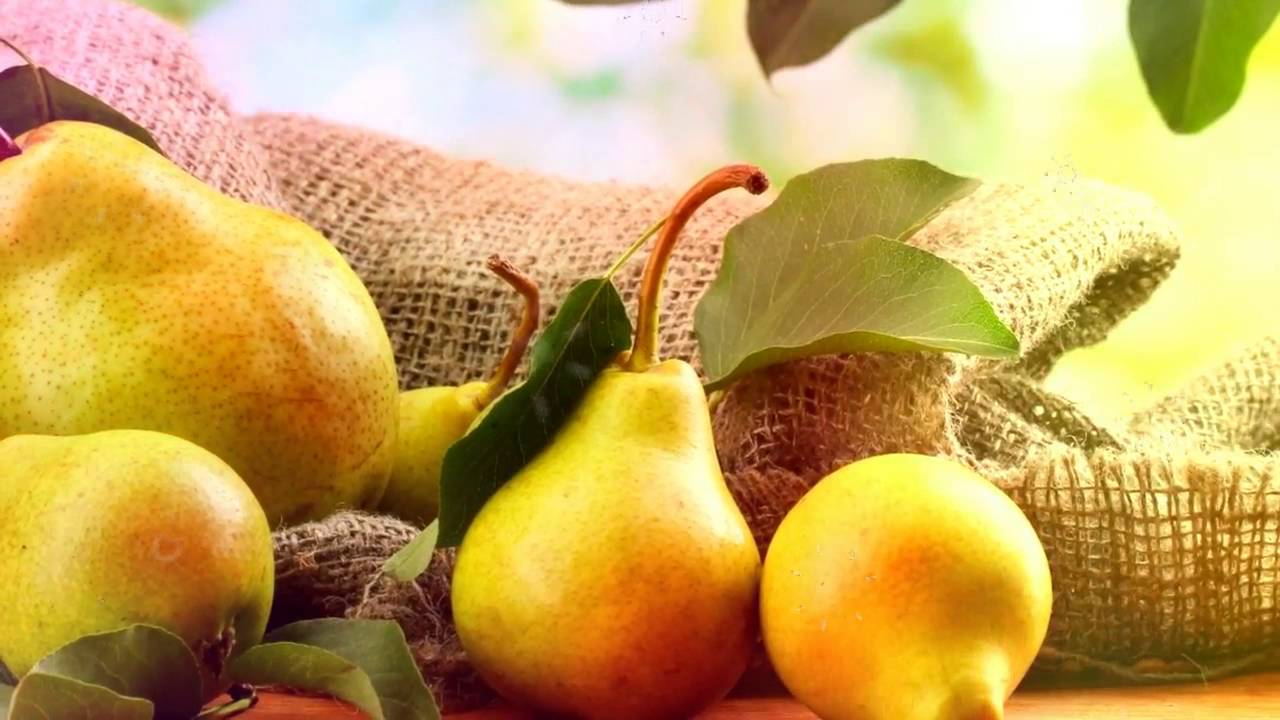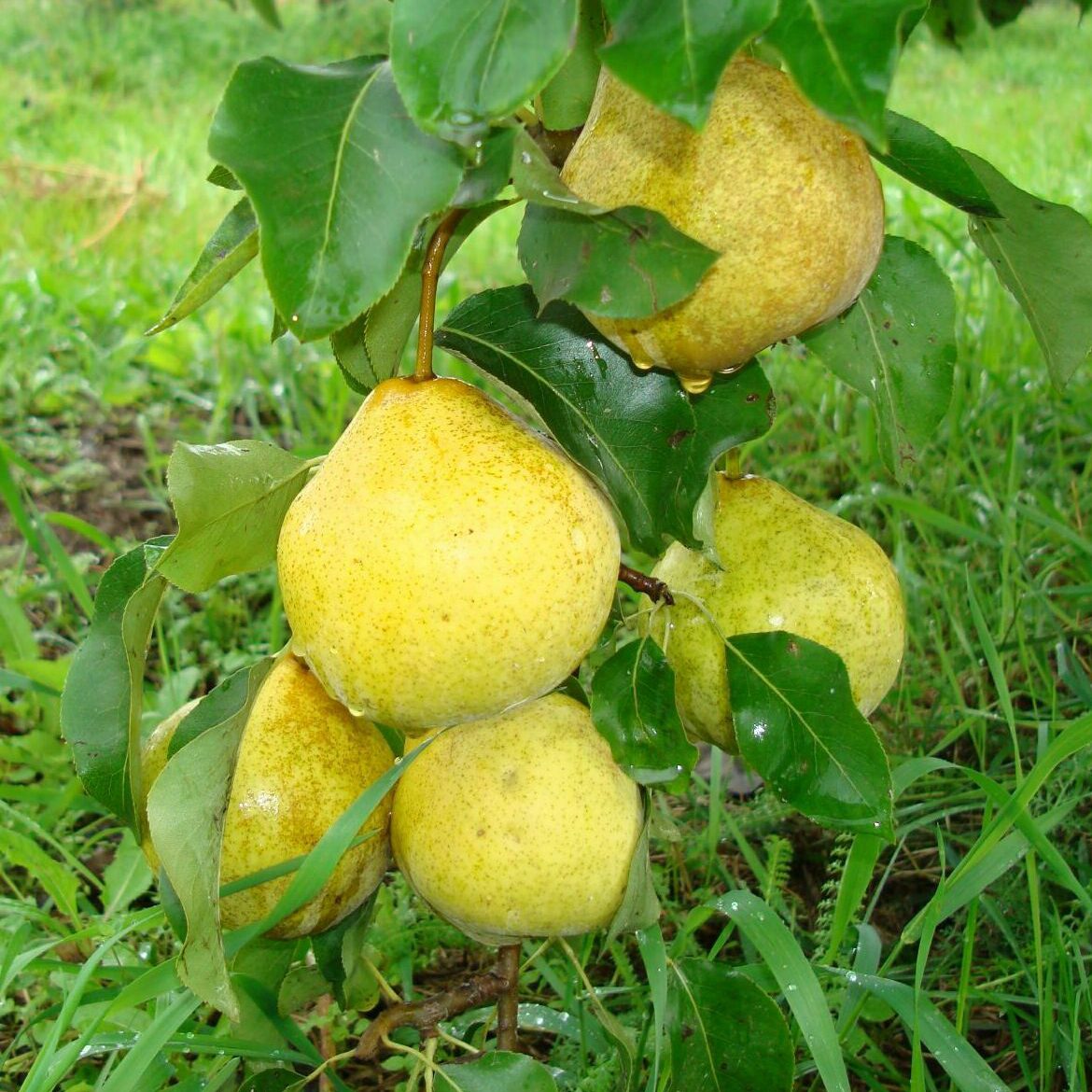Pear is one of the favorite fruit crops for most Russians. But, as often happens, due to lack of space, it is extremely rare to plant several different varieties in the garden at once. Therefore, the choice of wood must be treated with great responsibility. This is especially true of regions where gardeners often grow a thermophilic pear despite the weather conditions. Therefore, our scientists are developing winter-hardy varieties for gardeners throughout the country. One of them is the Yakovlev Memory Pear.
Content
History of the pear in memory of Yakovlev
The history of the pear in memory of Yakovlev is very interesting, because a dynasty of remarkable scientists Yakovlev - father and son - worked on its creation. The new pear was obtained by crossing the old French Olivier de Serre and the domestic, time-tested Teoma variety. The Pamyati Yakovlev variety inherited many excellent qualities from the parental forms:
- winter hardiness and scab resistance from Olivier de Serre;
- high level of burn resistance and annual yield from Tema.
Having successfully passed variety trials, in 1985 the pear in Memory of Yakovlev was entered in the State Register and zoned for the Central, Central Black Earth and Middle Volga regions. In areas with a temperate continental climate, the variety shows excellent results.
Yakovlev's Memory Pear is very popular not only among gardeners. Breeders often use it as a basis for breeding new varieties due to its winter hardiness, compact size and immunity to diseases.
Description of the variety in Memory of Yakovlev
The tree is fast growing, but small. The crown is compact, dense, rounded. The main branches extend from the trunk at almost right angles. With age, numerous branched ringlets are formed on them - short but thick growths on which the pear bears fruit. The bark covering the bole and the main branches is scaly, gray. Yakovlev's Memory Pear is distinguished by high kidney awakening. The shoot-forming ability of the variety is also high. Shoots are geniculate, of medium thickness, often with spines. The bark on them is light brown, with a small number of lentils.
Leaves on a long petiole, medium size, obovate, green. The plate is slightly curved, the apex is twisted, the edges are serrate. The surface of the leaf is leathery.The inflorescence consists of 5-6 white saucer-shaped flowers collected together.
Fruits are medium in size, weighing 125 g. The shape is beautiful, wide pear-shaped, sometimes with slight ribbing. The skin is shiny, light yellow, becomes golden yellow in the period of consumer ripeness. On a small part of the fruit, there is a slight orange blush. There are few subcutaneous points. The peduncle is of medium thickness, curved, long.
The pulp is semi-oily, juicy, has a creamy hue. The taste is sweet, with a slight sourness, without astringency. The aroma is pleasant. Slight granulation may be felt at the seed nest. Assessment of tasters - 4, 4 points.
Biochemical composition of fruits - table
| Substances | amount |
| Sakharov | 12,2% |
| Acidity | 0,25% |
| Vitamin C | 9 mg / 100g |
| Katekhinov | 30.2 mg / 100g |
The pears in Memory of Yakovlev contain quite a lot of arbutin, due to which the fruits have pronounced antimicrobial properties that have a direct effect on the urinary tract system.
Characteristic
- Early autumn variety, harvest ripens in early September.
- It enters the fruiting period quickly - 3 - 4 years after planting.
- The yield is high, increasing every year. From a 7-year-old tree, it is already possible to collect 20 kg of fruits, and during the period of full fruiting, this figure rises to 220 kg / ha.
- Yakovlev's memory is a self-fertile variety. This quality is a guarantee of a harvest regardless of weather conditions and the presence of a pollinator. But for those who want to get better quality fruits, you can plant a Lada or Augustovskaya pear nearby.
- Perhaps the main advantage of the variety is its winter hardiness. Even in regions of extreme gardening, this figure does not exceed 1.5 - 2 points. According to some reports, the variety can withstand temperature drops from -30 ° C to -38 ° C.
- From the parental forms of Yakovlev's Memory, he got excellent immunity - neither the fruits nor the leaves are affected by scab.
- However, drought resistance can be called insufficient. Only with sufficient watering, the fruits are able to show their best taste and presentation.
- The fruits of the variety have a universal purpose. They are delicious fresh and are an excellent product for processing - jams, compotes.
- A ripe pear does not fall off the tree, it is transported well.
Pear variety in Memory of Yakovlev - video
Advantages and disadvantages of pears Memory of Yakovlev - table
| Advantages | disadvantages |
| Early maturity | Lack of drought tolerance |
| Excellent commercial qualities of the fruit | When setting too many fruits there is unevenness of pears, the presence in the pulp stony cells. The same phenomena can be traced at mature trees |
| Good, increasing yields | |
| Self-fertility | |
| The small size of the tree makes care and harvesting | |
| High winter hardiness | |
| Scab resistance |
Planting rules of the variety
Before planting a pear, you need to determine a place where the plant will feel comfortable. For a pear in memory of Yakovlev, find a flat place in your garden that will meet the following requirements:
- the site should be well lit throughout the day. This is especially true for a seedling, which needs a sufficient amount of sunlight for normal development. Moreover, the fruits that ripen on the sunny side are much sweeter and larger;
- look for a dry landing site. Groundwater should not come closer than 2 m to the soil surface. If the landing site is located in a lowland or is often flooded, the pear should be planted on an artificial hill 50 cm high;
- the soil on the site must be loose. This quality will ensure normal gas exchange in the roots and will not allow the accumulation of excess moisture. For the variety, loams are ideal, which are distributed over most of the territory of central Russia.
The pear must be reliably sheltered from the prevailing wind in winter. Strong air flow is especially dangerous during the period when low temperatures are combined with low humidity. In such a situation, the bark of a tree is capable of very much loss of moisture, which can result in various damages. Therefore, try to protect the pear from the north side by a building or a high fence. During the rest of the year, it is important that a light breeze blows through the crown.
Site preparation
Yakovlev's Memory Pear prefers fertile soils. Therefore, if the land on your site is depleted, start preparing for planting in advance. First of all, clear the planting site of vegetation, perennial roots, stones. To increase the nutritional value of the soil, you can go in different ways.
- Under deep digging, add humus (4 - 5 kg per 1 m²), mineral fertilizers (10 g per 1 m²) and wood ash (300 g per 1 m²).
- Or sow the site with siderates (phacelia, clover, alfalfa). Legumes, for example, perfectly saturate the soil with nitrogen. Plants sown in summer are buried in the soil at the end of autumn during digging. Siderates are of double benefit. Firstly, they fill the soil with useful elements, and secondly, they increase its looseness.
When preparing a site, you should carefully consider the acidity of the soil. A pear will not grow in acidic soil. On alkaline, chlorosis can hurt. But the neutral or slightly acidic reaction of the soil will appeal to the tree.
Sapling selection and planting dates
A healthy seedling is the key to a future harvest. Therefore, the purchase of planting material must be taken with responsibility. When choosing a young pear, pay attention to the following points.
- Age. Saplings up to 3 years old have the best survival rate. The older the trees, the more the root is damaged during digging. A closed root system is ideal. Such trees can be planted at an older age.
- The root system is branched and powerful, the main root processes are covered with absorbent roots. Broken off, dried areas or swelling on the roots should not be.
- The trunk is smooth, covered with elastic bark without visible damage.
- Make sure vaccinations are present.
In order not to be disappointed in your choice, buy seedlings only from nurseries or from trusted sellers.
You can argue as much as you like about the timing of landing. Each period has its own strengths and weaknesses. I can only say one thing - you should heed the advice of experienced gardeners, and they most often recommend exactly the autumn planting. Moreover, the Yakovlev memory pear is approved for planting in regions with favorable climatic conditions for gardening. Usually the pear is planted from mid-September to mid-October. In more southern regions, work continues until the end of October. The main thing is that the seedling has 3 weeks before the onset of frost. During this period, the young plant will have enough time to take root, and in the spring it will be able to quickly start growing.
If for some reason you did not manage to plant the pear in the fall, then the procedure can be completed in the spring. And in order for the seedling to overwinter successfully, you can store it in a trench. To do this, select a nook and dig a shallow (50 cm) trench. Lay the tree with its top to the south, at an angle of 45 °. Cover the roots and part of the trunk with soil before the branch branches. Drizzle with plenty of water.
How to make a hole for a seedling correctly - video
Landing pit
Prepare the landing hole thoroughly. After all, a pear will grow in this place for more than a dozen years. The size of the depression depends on the size of the root system and on the type of soil.
- On the surface of the soil, use a shovel to outline the diameter of the hole - it is 1 m. The depth is 70 cm. If the soil is heavy, containing a lot of clay, the hole should be more spacious.
- Set aside fertile soil immediately. The rest can be scattered evenly in the garden or vegetable garden.Add 2 - 3 buckets of rotted humus, 1 glass of superphosphate and 3 tbsp. To the deposited soil. l. potassium sulfate. Thoroughly mix the soil with fertilizer and load into the pit. Pour 2 buckets of water to structure the soil.
- Always prepare the landing pit in advance. Before planting, at least 3 weeks must pass so that the soil has time to settle, and the nutrients in it are evenly distributed. If you plan to plant a pear in the spring, then prepare the pit in the fall. You can immediately drive a long stake into the bottom of the recess, which at first will serve as a guide, and later will become a support for the seedling.
Planting process
If the seedling has an open root system, then just before planting, dip the roots in a clay mash, to which you can add heteroauxin. This will increase the survival rate of the pear.
- Remove so much soil from the previously prepared hole so that the root system is located without creases.
- Collect the remaining soil mixture at the bottom in the form of a cone, on which place the seedling. Spread out the roots.
- Holding the seedling with one hand, use a shovel to load the excavated soil back into the hole. In the process, you can lightly shake the tree by the trunk so that the soil fills all the voids in the roots.
- Tamp the planting a little and form a watering circle at a distance of 50 cm from the trunk. Tie the seedling to a support.
- Pour 2 to 3 buckets of water into the watering circle. Wait until it is completely absorbed and cover the area with peat or dry soil.
- After planting, the root collar should be 5 - 7 cm higher than the soil level. Over time, the center of the hole will sag slightly, and the root collar will be flush with the soil.
- It is more convenient to land together. This will avoid possible distortion of the seedling.
Features of care when growing pears in Memory of Yakovlev
Despite the fact that all pears belong to the same genus, each variety has a certain set of characteristics. Therefore, there are always some nuances in the leaving process.
Watering
Yakovlev's Memory Pear is a moisture-loving variety, but this does not mean at all that the roots must constantly sour in the water. The tree may die from waterlogging. Overdried soil threatens crop failure and poor growth.
The seedling needs to be moistened weekly. Watering is carried out in grooves dug around the trunk at a distance of 30 - 50 cm (the older the seedling, the greater the distance). Pour 2 buckets of water in one go. It is desirable to divide this norm into 2 receptions - morning and evening. It is better to water with water warmed up in the sun.
An adult pear is moistened not so often, but with a large amount of water, which is poured into 3 to 4 annular grooves. Watering is carried out 1 - 2 times a month, using up to 3 buckets of moisture per 1 m². The frequency of the procedure should be regulated by the amount of precipitation. If the summer is rainy, then water only when necessary. But most often in central Russia, the summer period does not indulge in rains, so it is important to water the pear in the following periods:
- before flowering;
- after flowering, when the ovary is formed.
There is one more obligatory watering - winter watering. But it is produced only if the autumn is dry. Moisture-charging irrigation should be abundant - 10 liters of water should fall for each year of the pear's life.
For an adult pear, irrigation is considered the best method by sprinkling, which helps moisture to be absorbed evenly into the soil without washing out the roots.
After watering, be sure to loosen the soil in the trunk circle. This restores oxygen access to the roots and prevents weeds from growing. Use mulch to maintain normal moisture levels in the soil.
What fertilizers to use
For feeding pears in Memory of Yakovlev, both mineral fertilizers and organic matter are used. Top dressing begins 2 years after planting, provided that all suitable fertilizers have been added to the planting pit.
Root feeding - table
| Season | What to feed |
| Spring |
urea for 5 - 7 liters of water. The solution is applied in early spring to moist soil.
|
| Summer | To stimulate the formation of ovaries and increase yields 10 g of potassium sulfate are dissolved in 10 l of water. |
| Autumn |
designed for 1 m².
|
Alternatively, you can apply organics. It is brought in 1 time in 2 - 3 years for digging. You can use well-rotted manure or humus - 10 kg is enough for 1 m².
Foliar dressing is carried out in the summer. Their goal is to eliminate micronutrient deficiencies and prevent disease. To do this, use a solution of urea 60 g per bucket of water or Kemiru - 10 g for the same amount of water.
How to determine which microelements are missing in a pear - table
| Trace element | Deficiency symptoms |
| Nitrogen | On young trees, the foliage is pale, unable to develop to normal size. On the old pear, the leaves are yellow, lifeless, crumble early. Ripe fruits have small size. |
| Phosphorus | There are not enough leaves, they are small, unnatural green. |
| Potassium | The leaves have a smoky hue, become dry over time, but do not fall off. The fruits are unsightly. |
| Iron | Foliage loses its natural green color, withers. |
| Copper | A young pear lags behind in growth, dark leaves appear spots. Young shoots may dry out. |

The pear itself will tell you what trace elements it lacks, for example, with a lack of iron, the foliage loses its natural green color
Trimming and shaping
Despite its small size, the Yakovlev memory pear must be subjected to the shaping procedure. It is carried out in the spring after planting.
- The center conductor is cut at a height of 60 cm from the soil surface.
- From the shoots that developed the next year, the first tier is formed. To do this, choose 2 - 3 developed branches and shorten them by a third. The center conductor is cut to a quarter. The rest of the shoots are removed.
- The procedure is repeated the next year.
Young pear pruning - video
The shoots are shortened over the bud, which grows to the outside. Sections are covered with garden pitch.
So that the pear does not hurt and bear fruit well, after the final formation of the crown, other types of pruning are carried out:
- sanitary is carried out as needed. If the pear is sick, the branches that do not respond to treatment are cut. Frozen or broken shoots are removed in early spring;
- thinning is done in spring. Its task is to free the thickened crown from non-fruiting, weak or growing inward shoots. Thus, the illumination and ventilation of the crown increases, which contributes to the improvement of the quality of the crop.
Preparing for winter
The Pamyati Yakovlev variety is capable of withstanding severe frosts, therefore, a healthy and well-groomed tree does not need additional shelter. In winter, you just need to insulate the trunk circle, collecting a lot of snow on it.
Saplings are another matter. Fragile trees need additional protection. The root system should be covered with a 20 cm layer of mulch, and the trunk and skeletal branches should be wrapped in any breathable material.
Rodents are especially dangerous for pears in winter. A special net, which is fixed around the trunk, will help to escape from them.
Diseases and pests
Variety Pamyati Yakovleva has good immunity, especially against scab. Timely prevention of diseases and pests will increase the plant's resistance. Processing is carried out in early spring before the buds start blooming and in autumn, after leaf fall. Among the most popular remedies are Bordeaux liquid and iron vitriol. Along with these measures, pear immunity will help maintain proper agricultural technology and compliance with sanitary rules:
- the trunks must be cleaned of old bark and whitewashed in time;
- infected foliage and fruits are removed from the trunk circle and burned;
- the soil under the tree was dug up in the fall after leaf fall;
- even small wounds on the trunk and branches are treated with garden varnish.
But sometimes it happens that a disease or pests still affect the pear. At this moment, it is important to detect the problem in time in order to take measures to combat it.
How to deal with diseases and pests - table
| Diseases and pests | Symptoms | Causes of occurrence and optimal conditions spreading | Control measures |
| Black cancer, or Antonov fire | The disease develops slowly and its beginning may be at all not noticed. First on the bark small depressions or cracks. Co they grow over time, bark in damaged areas exfoliates and exposes cambial layer. Stricken the bark seems to be charred. | The pathogen enters the tissue through mechanical damage to the bark or frost breakers. Fungus development occurs at temperatures from 2 to 30 ° C. The main condition for rapid disease progression - high humidity. therefore infection most often occurs in rainy spring or autumn period. |
a sharpened knife to a healthy
solution of copper sulfate, then
more than 60% of a pear, you will have to |
| Rust | April - May on the leaves light spots appear with uneven edges. Then they take on a shade rust. In the center of the spot a dark brown point, back side leaf growths are visible in the form tubercles are mycelium. Damaged plates dry up and prematurely fall off. | Most often weakened ones get sick plants. Provoke the development of the disease may be close located landings juniper. Increased air humidity and temperature 15 - 20 ° C are the best environment for the development of the fungus. | As a fight, use drugs that penetrate deep into tissues, block the development of the fungus.
Each of the drugs has |
| Aphid | If you don't notice in time small insects, then on juicy young shoots in soon formed large pest colonies. Sucking the juices of the plant and depriving it of nutrients substances, insects weaken trees slow down growth, lead to the fall of flowers and ovary, reduce winter hardiness. | The pest spreads quickly in conditions of low humidity and high air temperature. |
use Actellik - 2 ml
it already has an ovary, then they apply |
Than diseases and pests threaten pear - photo gallery
- Black cancer, or Antonov fire, is an insidious disease that can lead to the death of an adult plant
- Rust leads to premature loss of foliage on the pear, depriving the plant of normal development
- Aphids suck nutritious juices from the pear, making it defenseless against disease and frost
Reviews about the pear in memory of Yakovlev
I have Yakovlev's Memory at the age of 18, from the age of three, it regularly bears fruit, in contrast to the 19 tested varieties.
The memory of Yakovlev - this year, without any complaints, endured the winter normally. Fruits were true a little, only half a bucket, but the fruits were larger than usual. Grushe 10 years old - and there were never any problems with it.
The Pamyati Yakovlev variety bore fruit for 2 years. 1year-harvest one pear, huge and delicious. 2year-a lot of small pears, not very tasty (how can you get sweets without the sun). Wasps are crazy about her. Who will eat ahead. I was very sick with scab this rainy summer.
Another pluses of Yakovlev's Memory are its short stature, fibrous roots (can be planted at a high level of groundwater), horizontal arrangement of skeletal branches, self-fertility, immunity from scab, early onset of fruiting and much more useful. For me, she is the best pear.
I have tried this pear. Moreover, I had it. Removed. The main drawback is the rocky cells that spoil everything. The very small and the taste, let's say, not very.
Probably my favorite flavor. It has a "pharmacy" as the breeders dubbed the flavor - I have never seen such a taste in any other osrt. But it is because of him that many people do not like him. The pulp with granulations, in a bad year, very strong, which leads to a loss of taste. Fruits weighing from 90 to 150 grams, but these are rare. Autumn in the conditions of Michurinsk - we shoot in mid-September, there are three weeks without a refrigerator completely. juicy. bears fruit every year, alternating between strong and moderate yields.
Yakovlev's Memory Pear is not capricious and not particularly whimsical. The main trump cards of the variety are frost resistance, self-fertility and annual fruiting. In the spring, the pear will be a real decoration of the garden, and in the fall it will give you a good harvest.
